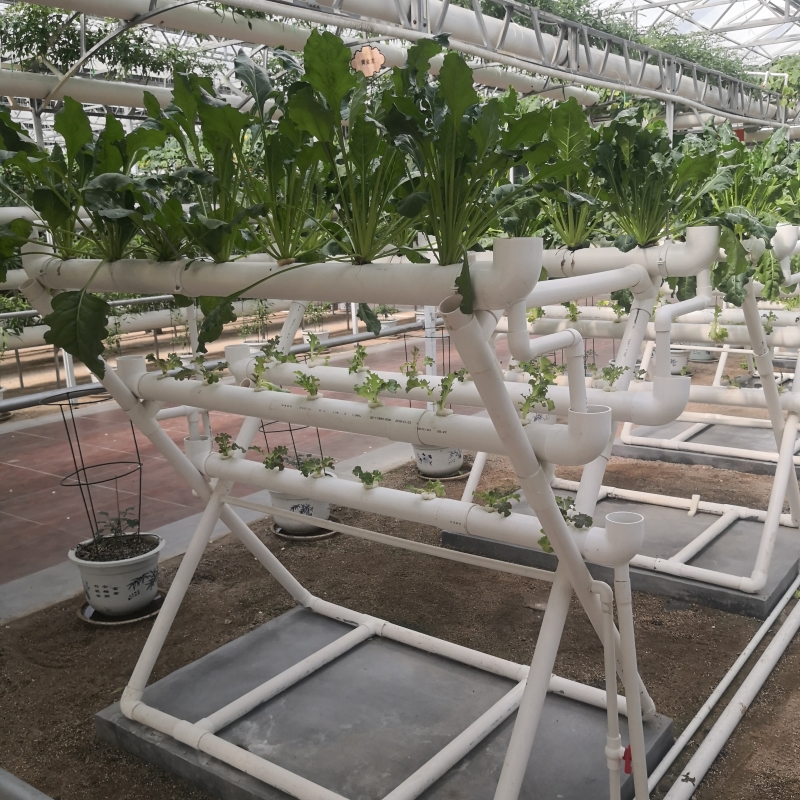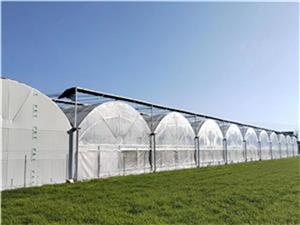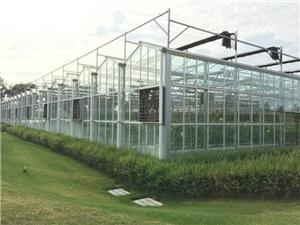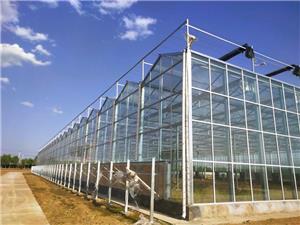In the wave of transformation and upgrading in modern agriculture, glass greenhouses, with their advantages of high light transmittance and controllable environment, have become the core carrier of advanced planting technologies. As a key planting model in glass greenhouses, hydroponic systems are gradually rewriting the production logic of traditional agriculture. Glass greenhouses provide a stable growth environment for hydroponic systems, which not only shield crops from external wind, rain, pests and diseases but also enable precise regulation of temperature, humidity and light through intelligent equipment. This ensures that hydroponic crops are always in the optimal growth state, and the combination of the two is a model of high-efficiency production in modern agriculture.
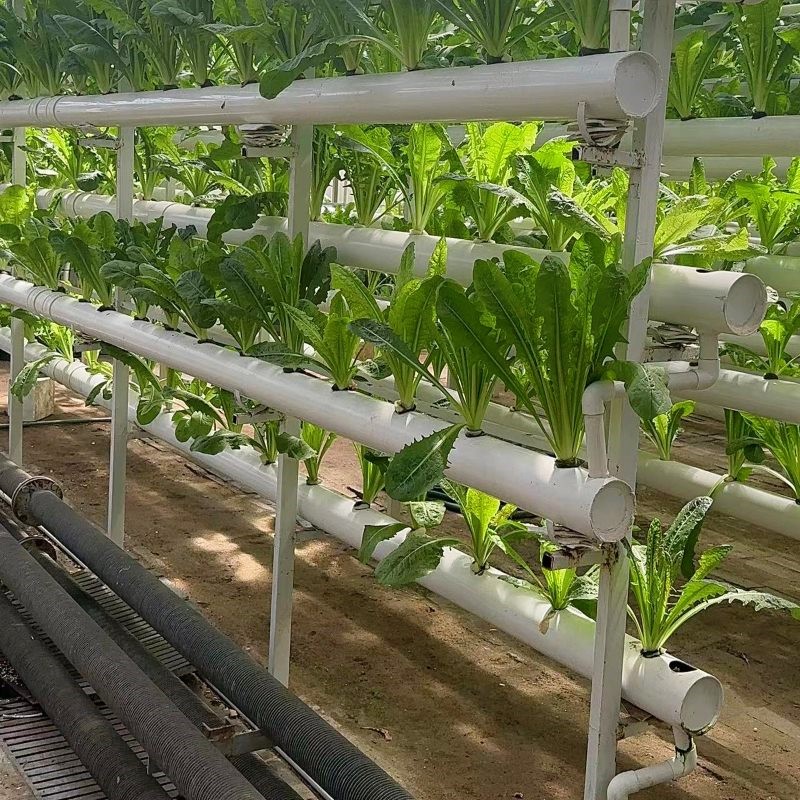
The core of hydroponic systems lies in breaking away from soil dependence and providing crops with nutrients required for growth through the configuration of precise nutrient solutions. In glass greenhouses, there are three common hydroponic models: Deep Water Culture (DWC), Nutrient Film Technique (NFT) and aeroponics. Deep Water Culture is suitable for leafy vegetables. The enclosed environment of glass greenhouses allows crop roots to be continuously immersed in nutrient solutions with sufficient oxygen, which not only reduces nutrient loss but also lowers the risk of root rot. The Nutrient Film Technique uses a thin layer of nutrient solution flowing on the surface of the roots, making it suitable for fruits and vegetables such as strawberries and tomatoes. The light-transmitting property of glass greenhouses can be combined with this technique to maximize the efficiency of crop photosynthesis. Aeroponics sprays atomized nutrient solutions directly onto the roots. In the constant-temperature environment of glass greenhouses, it can further improve the efficiency of nutrient absorption, making it particularly suitable for the cultivation of high-value medicinal plants. These three hydroponic models are flexibly applied in glass greenhouses and can be adjusted according to crop types and market demands, greatly enhancing the diversity of cultivation and economic benefits.
Compared with traditional soil cultivation, hydroponic systems in glass greenhouses have significant advantages. From the perspective of resource utilization, hydroponic systems in glass greenhouses can realize the recycling of water resources, with water consumption only 1/10 of that of soil cultivation. Moreover, there is no need to use soil conditioners and herbicides, which reduces agricultural non-point source pollution. In terms of growth efficiency, the constant-temperature environment of glass greenhouses, combined with the precise nutrient supply of hydroponics, can shorten the crop growth cycle by more than 30%. For example, hydroponic lettuce in glass greenhouses only takes 25-30 days from seedling cultivation to harvest, which is much faster than the soil cultivation model. From the perspective of quality control, hydroponic systems in glass greenhouses allow full-process monitoring of nutrient solution components, ensuring balanced nutrient supply for crops and avoiding soil heavy metal pollution. The hydroponic vegetables produced are not only fresh and tender in taste but also meet the green and organic standards, which better cater to modern consumers' demand for food safety. In addition, glass greenhouses have higher space utilization. Hydroponic systems can adopt multi-layer vertical planting designs to increase the yield per unit area by 2-3 times, providing a new path for large-scale agricultural production at a time when land resources are scarce.
To give full play to the synergy between glass greenhouses and hydroponic systems, scientific management and maintenance are crucial. First, attention should be paid to the proportioning and monitoring of nutrient solutions. Hydroponic systems in glass greenhouses have extremely high requirements for the concentration and pH value of nutrient solutions, which need to be tested and adjusted regularly. For instance, the suitable EC value of nutrient solutions for leafy hydroponic crops is 1.5-2.0ms/cm, and the pH value should be maintained between 5.5 and 6.5. The intelligent monitoring equipment in glass greenhouses can feed back data in real time to ensure parameter accuracy. Second, it is necessary to properly regulate the environment of glass greenhouses. The suitable growth temperature for hydroponic crops is 18-25℃, and the air humidity should be controlled between 60% and 80%. The shading systems, ventilation equipment and heating devices of glass greenhouses need to operate in linkage to create a stable environment for hydroponic crops. Finally, pest and disease prevention should be strengthened. Although glass greenhouses reduce the invasion of external pests and diseases, the nutrient solution circulation of hydroponic systems may become a carrier for disease transmission. Therefore, it is necessary to disinfect the nutrient solution regularly and set up insect-proof nets at the entrances of glass greenhouses to block pests from the source.
With the development of smart agriculture technology, hydroponic systems in glass greenhouses are upgrading towards intelligence and digitalization. Today, some advanced glass greenhouses have realized full automatic control of hydroponic systems. Through sensors, they collect real-time data on crop growth, nutrient solution parameters and environmental indicators, and automatically adjust water pumps, fertilizer applicators and temperature control equipment with the help of IoT platforms, realizing dddhhhunmanneddddhhh hydroponic production. This intelligent upgrade not only reduces labor costs but also enables hydroponic systems in glass greenhouses to achieve the ultimate in dddhhhprecision plantingdddhhh. For example, AI algorithms are used to predict the nutrient needs of crops and adjust the proportion of nutrient solutions in advance, ensuring that each hydroponic crop receives the optimal nutrient supply.
The in-depth integration of glass greenhouses and hydroponic systems is not only an innovation in agricultural production methods but also an important measure to address global food security and resource shortages. Under the protection of glass greenhouses, hydroponic systems have broken through the limitations of the natural environment and can be used for cultivation in special areas such as suburban areas and saline-alkali lands, providing new ideas for the development of urban agriculture and facility agriculture. In the future, with the continuous iteration of technology, hydroponic systems in glass greenhouses will further improve efficiency and reduce costs, becoming a core force driving the green and sustainable development of agriculture and allowing more people to enjoy high-quality agricultural products brought by high-efficiency agriculture.
